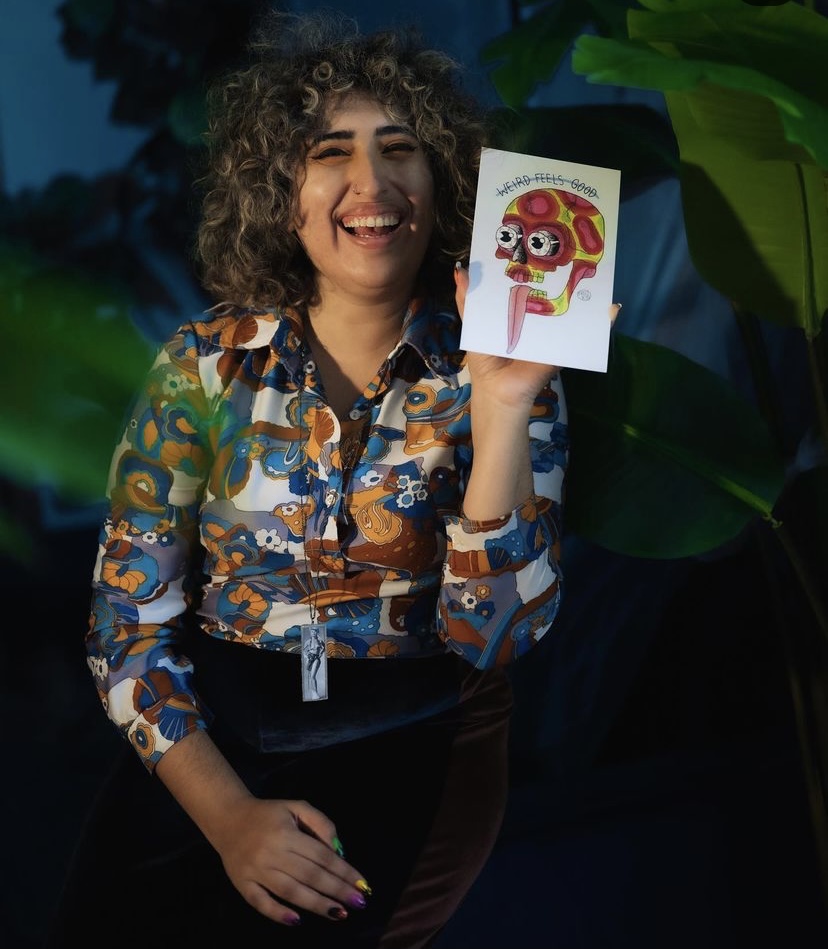THE GREEN LINE AND
TECH FOR GOOD CANADA’S GUIDE TO...
Intersectional Feminism

📸: Provided by Hana Shafi.
WITH Hana (Frizz Kid) Shafi

Stephanie Bai
Soon-to-be graduate of the University of Toronto who writes about cultural and social intersections. Spare time is mostly spent eating, folding or thinking about dumplings.
December 2, 2021
Defining
the problem
The word “feminism” means different things to different people. In 1989, American legal scholar and civil rights activist Kimberlé Crenshaw coined the term "intersectionality" to explain how race intersects with gender to produce barriers for Black women.
Since then, the term has grown to include other social categorizations including physical ability, socioeconomic status, citizenship and more. That’s why The Green Line, in partnership with Tech for Good Canada, interviewed illustrator and writer Hana Shafi about what intersectional feminism means and why Torontonians should embrace it.
“Saying equality for all of us is nice, but you have to really address all the little inequalities first.”
HANA (FRIZZ KID) SHAFI
28, CABBAGETOWN
Meet
Hana
Hana (Frizz Kid) Shafi, 28, is an illustrator and writer based in Cabbagetown-South St. James Town. She says “feminism” is a complicated word and can have different meanings depending on who you speak to. She finds it hard to identify with mainstream “girl power” feminism, citing its commodification by companies and celebrities who prioritize image over genuine change.
Shafi is a proponent of intersectional feminism, which describes how women’s overlapping identities impact the way they experience oppression. For example, a straight Black woman and a trans white woman may face different barriers. “Saying equality for all of us is nice,” she says. “But you have to really address all the little inequalities first.”

📸: Provided by Hana Shafi.
Importance of
intersectionality
Shafi feels feminism is about more than just gender and girl power; it's also an issue of class and race. People have many different intersecting identities that impact them in different ways. She uses herself as an example.
“I’m a woman and I want equality,” she explains, “But I’m also a woman of colour, someone who immigrated here with my parents, someone who is Muslim.”
Because there are layers to our identities, Shafi believes there should be layers to how feminism addresses inequality. In other words, feminism must go beyond the surface. “[Feminism] has to tackle all forms of systemic inequality,” she explains.
Shafi describes herself as a feminist, but feels that “feminist” should mean the same thing for everyone in an ideal world. For instance, some self-identifying feminist don't include trans people in their definition of the term. She says these are not versions of feminism that she identifies with.
“I think I just try to be loud — I just try to put my viewpoint and my perspective out there.”
HANA (FRIZZ KID) SHAFI
28, CABBAGETOWN
Privilege
and Feminism
A lot of people conflate privilege with an easy life, Shafi says, but everyone faces challenges that make life difficult. So, saying someone has privilege doesn't mean they necessarily have it easy; instead, it indicates that there are obstacles they don't face that others do. She cites a hypothetical cisgender, heterosexual, white man who's had a tough upbringing as an example.
“Maybe [he] grew up poor,” she says. “That is valid — I’m sure [he] had struggles that way — but [he] didn’t have to face, for example, racism or sexism or transphobia or homophobia.

📸: Provided by Hana Shafi.
How she
advocates for herself
“I think I just try to be loud,” she says. “I just try to put my viewpoint and my perspective out there.”
Shafi does this through her writing and artwork. She says she's written two books that are both imbued with her lived experiences.
Shafi likes to create art to express herself, but also to challenge perceptions and existing systems in Canadian society. For instance, much of her work focuses on body politics and challenging traditional beauty standards.
What
Torontonians can do
It can sometimes feel as if we need to tackle every single issue, but no one person can fix all the problems in the world. That's why Shafi believes a good place to make an impact is closer to home. “Find something that your community needs and start that,” she says.
If you're part of a particular community, for example, you can form a support group or on WhatsApp that includes women in your neighbourhood. It can serve as a resource that community members when they're in need.
And in
Conclusion
Shafi says it's important to look at feminism through an intersectional lens because it helps us be more inclusive of communities that are marginalized, and address inequality on multiple levels.
From meeting the needs of women in your community to expressing yourself through art, Shafi says feminist acts come in many different forms.
Next Steps and
Resources
Actions
Next steps for people who want to take action,
but don’t know where to start.
Expand Your
Understanding
Intersectional feminism takes a layered approach to feminism. Educating yourself about issues of privilege, class and race can help you better grasp the nuanced realities many women face.
Express
Yourself
Whether it's through creation or by speaking up, expressing yourself can help others better understand where you are coming from, and can create meaningful discourse.
Address
Community Needs
Reflect on and/or ask about the needs of women in your communities. You don't necessarily have to make a grand gesture. Simple acts like creating online group chats, organizing events or participating in local initiatives can go a long way and open up opportunities for others.
Join Our
Community
Gather with other like-minded Green Line community members to discuss and take action on intersectional feminism.
Resources
Community-curated resources
to help you take action.



